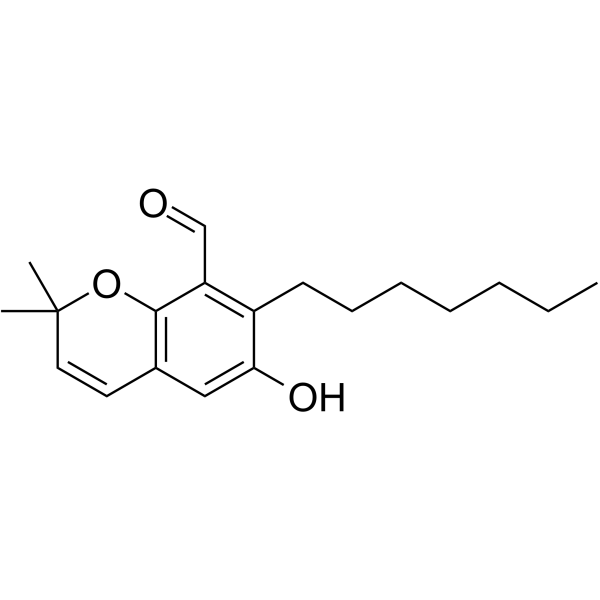2701570-80-9
| Name | Asperglaucin B |
|---|
| Description | Asperglaucin B is an alkylated salicylaldehyde derivative from the fungus Aspergillus chevalieri SQ-8, with antibacterial activities. Asperglaucin B displays potent antibacterial activities against two plant pathogens Pseudomonas syringae pv actinidae (Psa) and Bacillus cereus, with an MIC value of 6.25 μM[1]. |
|---|---|
| Related Catalog | |
| Target |
MIC: 6.25 μM (Pseudomonas syringae pv actinidae (Psa) and Bacillus cereus)[1] |
| In Vitro | The possible bacteriostatic mechanism for Asperglaucin B is to alter the external structure of B. cereus and Psa, and to cause the rupture or deformation of the cell membranes, respectively[1]. |
| References |
| Molecular Formula | C19H26O3 |
|---|---|
| Molecular Weight | 302.41 |
